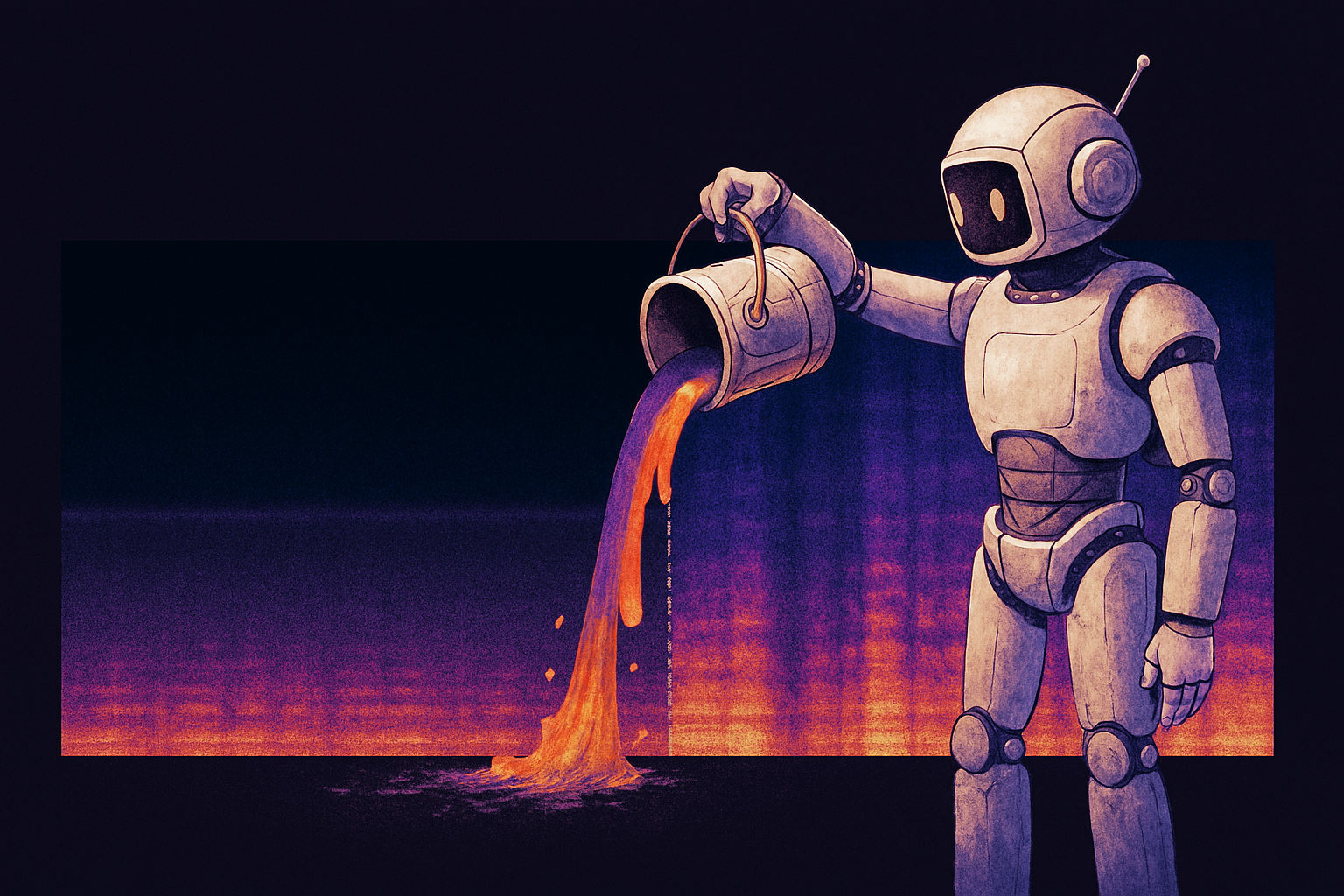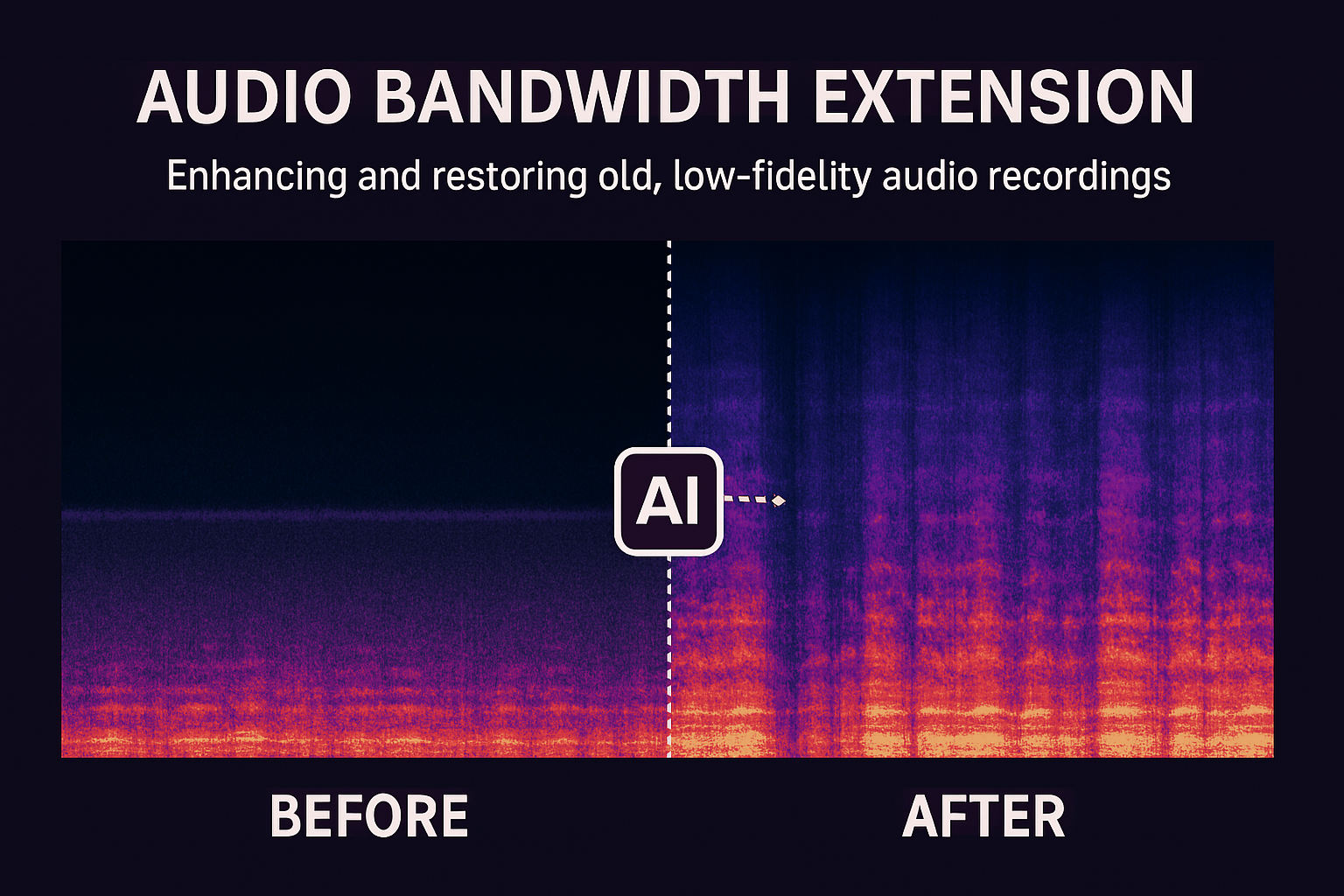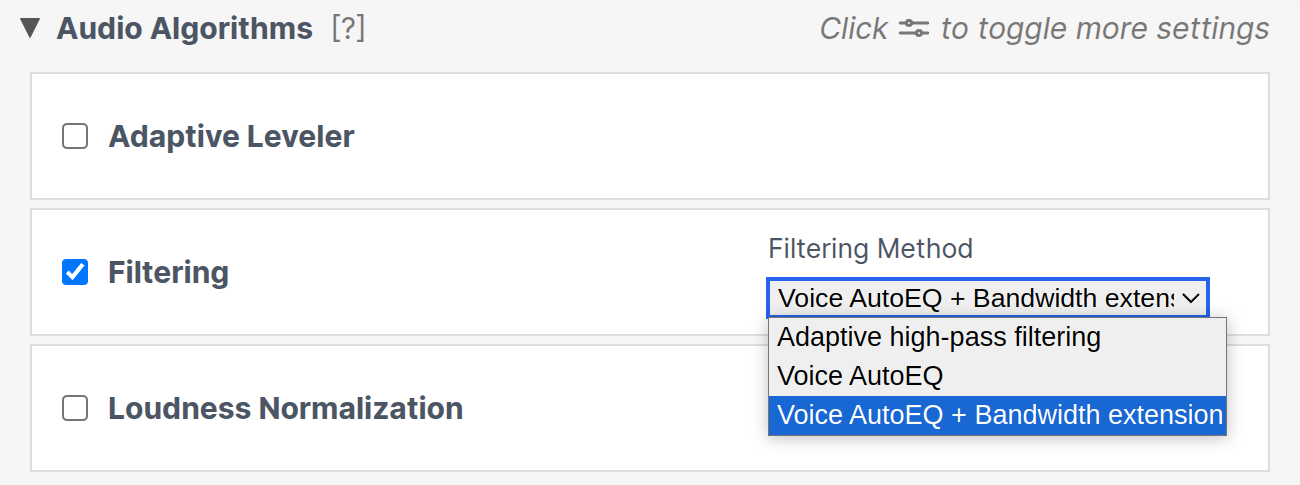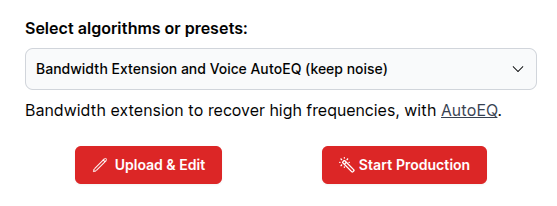Ever struggled with muffled, low-quality audio in voice calls or old recordings?
Our latest feature — Bandwidth Extension, now integrated with the
Voice AutoEQ
— is here to change that.
Audio bandwidth extension (BWE) intelligently restores missing high frequencies,
making speech clearer and more natural, even in archival or low-bitrate recordings.
Listen to our BWE audio examples below to hear the difference for yourself!

What is Audio Bandwidth Extension (BWE)?
Audio bandwidth extension is a technique used to artificially recreate or “extend” higher audio frequencies that may have been lost or limited during recording, transmission, or compression. By analyzing the existing frequency information in an audio signal, our algorithm can predict and synthesize additional higher-frequency components. This approach helps restore the brightness and clarity of an audio track, making it sound more natural and pleasant to listeners.

Bandwidth extension is particularly helpful in scenarios such as working with archival speech recordings,
low-bitrate voice calls, and compressed audio streams where high frequencies are lost due to bandwidth constraints.
The Auphonic bandwidth extension is specifically optimized for speech and does not
enhance music or environmental sounds, like noise, reverb, etc.
Listening Examples
The following example from the Lex Fridman Podcast #457
demonstrates how it is possible to take a high-quality recording, downsample it to 4 kHz bandwidth, and then use our
bandwidth extension algorithm. The result comes remarkably close to the original audio with a full 20 kHz bandwidth.
Hear the difference yourself as the audio regains its natural clarity and depth:
 |
 |
| Original Audio: |
|
 |
 |
| Low Bandwidth: | |
 |
 |
| Bandwidth Extended: |
Bandwidth extension of historic recordings (male and female speaker)
In practice, bandwidth extension is useful for restoring historic recordings that have been downsampled due to bandwidth constraints. This example is a record of the historic “Margaret Thatcher's Iron Lady speech” and shows the difference between the original recording and the bandwidth-extended version:
| Low Bandwidth: | |
| Bandwidth Extended: | |
| BWE and Denoise: |
We added a version with and without denoising here, to hear that our algorithm does not add frequencies to environmental sounds like noise, reverb, etc.
The second example is an archive recording of Richard Nixon's “End Of Vietnam War speech”:
| Low Bandwidth: | |
| Bandwidth Extended: | |
| BWE and Denoise: |
How to use it?
To activate the new bandwidth extension feature, just select the option “Voice AutoEQ + Bandwidth extension” as “Filtering Method” in the section “Filtering”:

Or use the Auphonic preset “Bandwidth Extension and Voice AutoEQ (keep noise)”:

Bandwidth extension is always applied in combination with the Voice AutoEQ, where we also released some updates ...
Voice AutoEQ Updates
We took some time to further refine our Voice AutoEQ algorithm,
please also take a look at our previous blog post.
Now the Voice AutoEQ works more effectively with reverberant speech and can
adapt even when speech is mixed with background music.
The de-plosive/de-pop feature that reduces strong plosives in speech is now integrated into our
Noise Reduction Algorithm making Voice AutoEQ even more effective
when combined with our Speech Isolation or Dynamic Denoiser.
Voice AutoEQ Listening Examples
Voice AutoEQ with background music
This is an example from the Climate Of Joy podcast intro. The enhanced version improves speech intelligibility without affecting the music balance.
| Original: | |
| AutoEQed: |
Voice AutoEQ with reverberant speech
This recording by conduitministries.com is recorded in a very reverberant room. The original audio sounds slightly dull, but the Voice AutoEQ version preserves the reverberation while adding more clarity. However, if you want to decrease the reverb, you could also select the Remove Reverb amount option in our Noise Reduction section.
| Original: | |
| AutoEQed: |
Reducing plosives in speech
This snippet extracted from a video about
Pop Filter vs Windscreen
shows how our Noise Reduction algorithm — here in combination with the Voice AutoEQ — can be used to reduce plosives in speech.
(Please listen with headphones or good loudspeakers to hear the difference.)
| Original: | |
| Processed: |
What do you think?
Your input helps us make our audio features even better.
Give these improvements a try
and let us know what you think!
Whether it is a game-changer for you or there is still room to improve, we
would love to hear from you in the production feedback or through our
support channels.